Day Two of Prague: Rise and Shine! After seeing Alphonse Mucha's Art Nouveau stained-glass painting at St. Vitus Cathedral, we took a small detour and paid his mini museum a visit. But first, we went to see the Dancing House, a seeming Seussville house come to life for a quick photo. After gettin' jiggy with it, we hurried back to Nove Mesto or New Town Square. Unlike Stare Mesto (Old Town Square), Nove lacks charm and character though tries to make it up with its stretch of branded shops and stores. There were a few kielbasa stand's at the end, but nothing that stood out for us to linger further. That, or we were just too excited to see Mucha's work.
Fortunately a few blocks away from Nove Mesto, we reached the Mucha Museum early enough to spend time ooohhh-ing and aahhhh-ing at his anime-ish, pastel paintings. The museum, dissimilar from any we've seen, is relatively small. A 20-minute video of Mucha's life routinely plays at the back of the site while the rest of his work, hangs simply on ivory walls yet leaving us wanting to see more. The paintings were absolutely unique and beautiful. Wrapped in flowers, vines, flowing dresses, fading pastel colors, and evocative women, Mucha's work is easy on the eye and inspires anyone who sees it. Some of his works are posted at the
Mucha Foundation website, which contains more information and details about his life and works.
After Mucha, we went straight to see Prague's Jewish Quarters. Debated on whether to go inside the sights or not, we finally bought our tickets at a queue-free souvenir shop across the Old-New Synagogue. The Old-New Synagogue, the oldest in Europe, stands out from its neighboring Nouveau-painted buildings with its serrated gables and rice roofing brought together by its brick red, tawny and rusty hues. The synagogue's nave interior was simple. Backdropped with high ceilings and narrow windows, it comes with a wood wall-seating good for maybe forty people, the bimah in the middle and the elaborate Ark housing the Torah.
The Klausen Synagogue and the Ceremonial Hall, situated near the Jewish Cemetery, exhibit Jewish traditions and festivals. We visited the Ceremonial Hall first where it presented burial customs. In Jewish law, the dead is never left attended until the person's buried as a sign of respect and burials preferably happen within a day or two after the time of death. It's also customary to leave stones and even pieces of paper containing prayers on top of their headstones (as we've later seen in the cemetery) as a remembrance of them. In addition, many Jews enter the field of medicine, not solely because for their love of science but a Sacred Duty to help those in need.
While the Hall focuses mostly on a person's death, the Klausen Synagogue presents the Jews' everyday life - birth, circumcision, marriage and festivals. Upon presenting our ticket, we were welcomed by a charming old man, sitting behind the ticket counter while picking his nose with his pinky, eyes closed. Ralph and I, grinning ear to ear, dared not disturb his ritual. "Halo!" he finally greeted, now wide-eyed. "Halo!" we responded, still grinning as we walked past him and inside Klausen. Obviously newer than The Old-New, the Klausen looked more like a museum than a synagogue. It exhibited some circumcision tools, kitchen wares, religious items, wedding gifts and even a chuppah! The breaking of the glass in a wedding ceremony is said to be reminder of the sadness and destruction of the Temple, and should be remembered even in the midst of jubilant festivities. Mazel Tov!
Prague, Czech Republic in Pictures
For dinner, we ate at one of the most beautiful cafe's I've ever seen - Kavarna Obecni Dum at the Municipal House. It's high ceilings, light and airy colors, wooden tables and chairs - makes up its Nouveau interior. Surprisingly affordable, we ate a meal of omelette's, soups and side veggies. Food and ambience was great but the service, not so much. Our aggressive waitress was rude and totally off-putting. With two hours to kill before the light show at 8PM, we finally enjoyed the rest of Old Town Square, where the Astronomical clock, Easter shops and Trdelnik, roasted cinnamon bread, abound. We capped the night with the long-awaited Image Theater's, Afrikannia, a story of a married couple vacationing in Africa. The show had an open-seating and was immediately filled. But the elevation of its seats failed to consider people 5' and below. Sitting beside two kids, we practically had to crane our necks above the crowd for the whole time to the dismay of those behind us and the unnecessary guilt of those in front. Thanks to this one minute clip from
Image Theater's Youtube Channel, I can relive a short part of it in the comforts of my own home.
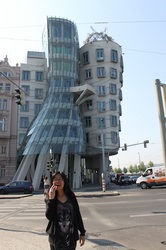
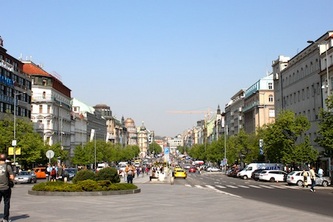
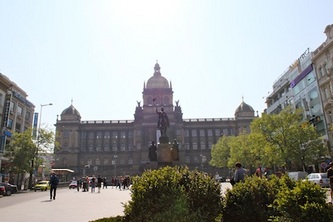
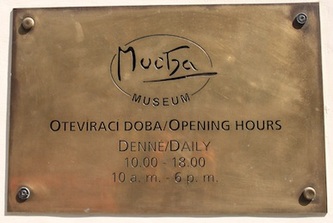
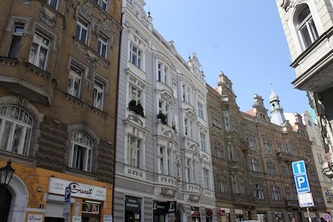
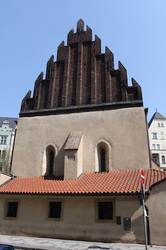
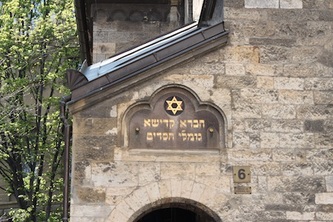
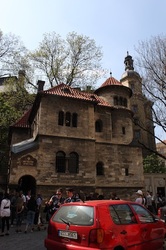
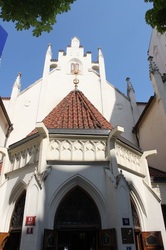


 RSS Feed
RSS Feed